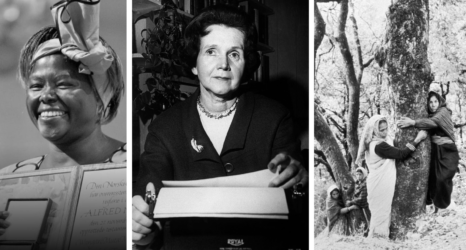Breast cancer awareness efforts have been wildly successful in one way and, research suggests, a great failure in another.
On the success side, the movement has mobilized a truly stunning range of companies to brand their products in ways that raise awareness of breast cancer. Here are a few examples.
Fresh cookies (with pink chocolate chips):
Cream cheese:
Cat food:
Gum:
Golf balls and tees:
Pots and pans:
Limo:
Grape tomatoes:
I think it’s safe to say that breast cancer marketing has changed the meaning of the color pink in the U.S.
Unfortunately, as a new paper [PDF] in the Journal of Marketing Research suggests, the association of breast cancer with the super-girly color pink hurts more than helps with actual breast cancer prevention behavior.
Stefano Puntoni and his colleagues found that when women were exposed to gender cues such as the color pink, they were less likely than women who had not been primed with a gender cue to think that they might someday get breast cancer and to say that they’d be willing to donate to the cause. Pink, in other words, decreased both their willingness to fund research and the seriousness with which women took the disease.
Puntoni explains this finding with a common psychological tendency: When people are faced with a personal threat, they tend to subconsciously go on the defensive. In this case, when women are exposed to information about breast cancer at the same time that they are reminded that they are vulnerable to it, they subconsciously try to push away the idea both that they’re vulnerable and that breast cancer is something they, or anyone, needs to worry about.
This raises questions about the decision to merge health care concerns with marketing. Marketers specialize in getting their product–in this case breast cancer–into public awareness. But while they may be effective in getting us to buy things, they may not actually be doing our bodies any good.
Moreover, marketers specialize in competition, getting one product attention instead of another. While breast cancer awareness may be good, the wild marketing success overshadows other health-care issues that also affect us. I did a bit of research.
According to the CDC (2007 is the latest available data), cancer is not the leading cause of death in the U.S.: It’s heart disease. Granted, cancer is a close second. In 2007, 616,067 people died of heart disease and 562,875 died of cancer. But not breast cancer, all cancers. People die of heart disease at a rate 10 times higher than breast cancer.
And if you want to prioritize cancers, more people are diagnosed with prostate cancer than breast cancer and more people die from lung cancer (158,859) and colon, rectal, or anal cancers (53,319), than breast cancer (40,589) (Cancer Statistics Review [PDF], data from 2008).
So why such an emphasis on breast cancer? The massive social movement organization behind it is one reason. I think, also, the body parts and the presumed cause of disease matter. Do we have less sympathy (and would, therefore, a similar marketing campaign be less effective) for lung cancer because we think that lung cancer patients are to blame for their own disease? Would we find colo-rectal-anal cancer-themed cream cheese somehow less appetizing? Or prostate cancer-themed gum? Are those parts of the body simply less iconic?
“Save the poop chute” just doesn’t have quite the same appeal?
I’m not trying to suggest that raising awareness of and funding research for breast cancer isn’t important, but I am interested in the strategies by which being “against” breast cancer is (literally) sold to us, whether these strategies work, and what (and who) we’re sacrificing in the meantime.





